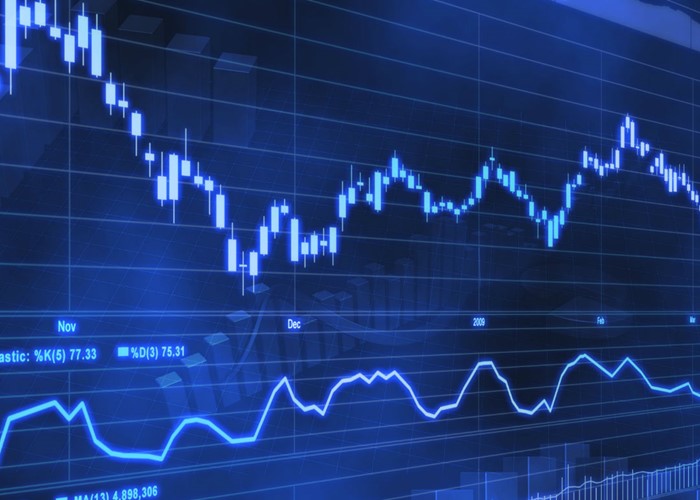How Big Macs and underpants can forecast the economy

From Big Macs to boxers, Robert Powell considers some alternative ways to identify economic growth and strife...
For something we all live within, have an impact on and contribute to, the economy is a notoriously hard beast to follow.
There is of course the usual stock of overused adjectives: flagging, waning, stalling and so forth. But look past the words and into the explanations, and what often lies beneath is a bewildering series of numbers, acronyms and indices.
It’s no wonder that over the years economists, financiers and journalists alike have attempted to distil this quagmire of complexity into something a tad more digestible – plain English economic indicators that we can all recognise. Here’s a selection of them...
Big Mac Index
A branch of the ever-evolving discipline of burgernomics, the Big Mac Index was created in 1986 by The Economist’s Pam Woodall and is published by the magazine each year. The index is based on purchasing-power parity, a theory that states in the long-run, exchange rates should adjust enough to level up the price of a basket of goods in different countries.
The index aims to make this theory more digestible by comparing the price of a Big Mac in America ($4.20) against the price (in US Dollars) of the burger in several other countries. If the difference is more than the country’s US Dollar exchange rate, the currency is over-valued. If the difference is less than the exchange rate, it is under-valued.
According to the 2012 study, a Big Mac in Switzerland is the priciest, as a result of the Swiss Franc being 62% over-valued. The Swiss Big Mac will set you back $6.81 against the US price of $4.20. According to burgernomics, Switzerland would need an exchange rate of SFr1.55 to the Dollar for the Big Mac prices to match up. The actual rate is 0.96.
India boasts the cheapest burger at just $1.62, suggesting the Rupee is a full 60% under-valued. However this figure does not actually relate to the Big Mac, as it is not sold in India. Instead, the index uses the Maharaja Mac, which is made of chicken instead of beef.
Indeed, economists point to the nutritional, culinary and attitudinal variations of Big Macs worldwide as a key inaccuracy within the index.
Hemline Index
The Hemline Index – first coined by George Taylor in 1926 – states that the length of women’s skirts rises and falls along with the economy. In times of economic decline, skirt lengths grow as the public become more conservative-minded and sensible. But in times of economic boom skirts shorten as women take more risks and splash out on more daring clothes. Or so the theory goes.
Hemline economists point to the long skirts of the 1930s following the Wall Street Crash and the economic growth and mini-skirts of the 1960s as proof.
However as the Wall Street Journal found out in 2010, the hemline index starts to come apart at the seams somewhat when you come across communities where women have always worn mini-skirts!
Likewise, no obvious skirt length trend is currently visible, despite the waning economy.
Underwear Index
The Underwear Index is one of the lesser known creations of the ex-Federal Reserve Chairman Alan Greenspan. The indicator works on the premise that men regularly replace their underwear in normal economic times and hence sales remain stable. However, when the economy takes a dive and purse-strings tighten, men put off purchasing underwear and sales figures stall.
So has this theory played out over the past few years?
According to Mintel, the UK underwear market had a poor year in 2009 as, according to the index anyway, men stopped shopping for their undies. However they began to bounce back in 2010, with sales increasing by 1% to £2.6 billion. So far so good Mr Greenspan.
However, interestingly the lingerie market bucked this gloomy retail trend and expanded right through the recession, peaking in 2010 at £1 billion. Though some might say this says more about the British reaction to a financial crisis than the economy itself.
Google Indices
Google is now so ingrained in everyday life that search term data is starting to provide a snapshot of what is high in the public mind. In other words, spikes in certain searches are now found to mirror economic trends.
For example, last year the Bank of England found that searches for ‘mortgages’ and ‘estate agents’ tended to peak around a month before house price rises, as people began to look at property options. Likewise, searches for ‘Jobseeker’s Allowance’ and ‘unemployment benefits’ usually rise with levels of unemployment.
Economic confidence can also be traced by tracking the number of people searching for ‘gold prices’. According to investment analyst Edward Ritchie, as economic confidence tanks, searches for ‘gold prices’ rise as people look into low-volatility investments to protect their cash in.
The search trends can be accessed using Google Insight. For ‘gold prices’, searches increased gradually from early 2008 peaking at a record high last August. Numbers have started to drop off since then, but with volumes still sat at almost twice the 2007 levels, Google’s crystal ball is still painting anything but a pretty economic picture.
Waffle House Index
Less an economic indicator and more a natural disaster gauge, The Waffle House Index was created by the Federal Emergency Management Agency in America.
For those not in the know, Waffle House Inc. is a popular restaurant company in the Southern states of America that prides itself on opening up shop as quickly as possible after a natural disaster.
The chain’s index works by looking at the menus of Waffle House restaurants that are located in danger zones. If the selection is green, a full menu is being served – indicating limited damage, a good power supply and lighting. Yellow means a partial menu and some damage, while red indicates a closed restaurant and severe damage.
And the Waffle House Index isn’t the only food-related indicator.
Since the recession began, takeaways have reported a sharp increase in sales at the expense of restaurants, as more of us order in instead of venturing out. Online takeaway portal just-eat.co.uk saw a 250% rise in orders across its network in the months after the 2008 crash. Likewise, Domino’s Pizza reported a growth in profits by almost a quarter in 2008.
On a slightly less accurate level, it’s also said that a spike in takeaway pizza sales in Washington DC precedes major domestic crises or foreign conflicts. The theory goes that a large number of Whitehouse and Pentagon staff work late in turbulent political times and hence order pizza into the office instead of cooking at home.
Your ideas
What alternative economic indicators have you spotted?
Let us know using the comment box below.
More: Protect your cash from an interest rate rise | UK ‘already in recession’, say forecasters
Most Recent
Comments
-
The Leisure Club index....how many clubs a la David LLoyd start offering free incentives and reduced rates to get you through the door, and how many of these clubs subsequently go pop.
REPORT This comment has been reported. -
I suppose my underpants could indicate a sudden & severe recession or disaster by a sudden change in colour ;)
REPORT This comment has been reported. -
I go with my gut. It expands during recession & bad times because I snack between meals & in evenings instead of going out (too expensive). When times are good I am happy and out with friends.
REPORT This comment has been reported.
Do you want to comment on this article? You need to be signed in for this feature









02 February 2012